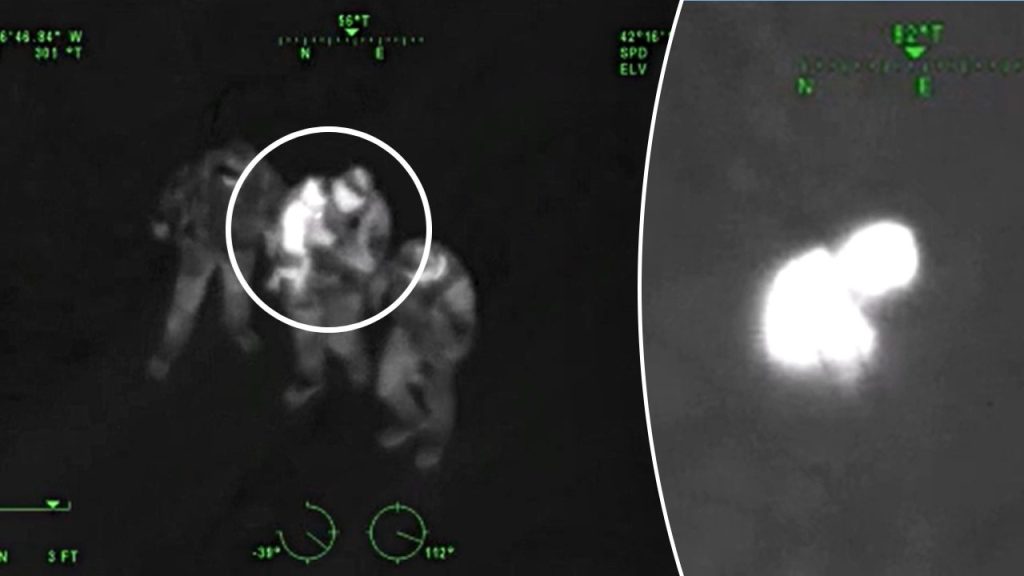On a recent Sunday evening, Michigan State Police (MSP) successfully executed a rescue operation for a missing 2-year-old boy who was found in a ditch along a freeway. Utilizing advanced heat-seeking technology, law enforcement located the child nestled in a vulnerable position, prompting immediate medical assistance. This incident highlights the effective collaboration among various agencies and the advantages of modern technology in search and rescue missions.
| Article Subheadings |
|---|
| 1) Timeline of Events Leading to the Rescue |
| 2) The Role of Law Enforcement and Agencies Involved |
| 3) Advanced Technology in Search Operations |
| 4) Condition of the Child Post-Rescue |
| 5) Community Response and Aftermath |
Timeline of Events Leading to the Rescue
The incident began unfolding around 8:43 p.m. on a Sunday evening when the child’s family reported him missing after he was last observed watching television in their home. A 911 call was made roughly an hour later, which triggered a multi-agency response to the Blackman Township area where the child was last seen. After the report of the missing toddler, officers from the Blackman-Leoni Department of Public Safety (BLDPS) quickly arrived at the scene.
Law enforcement commenced a thorough search that lasted nearly two hours, dedicating considerable resources to locate the child. Authorities remained vigilant and focused during the search, as valuable minutes passed in the effort to find the toddler safely. Their diligence, coupled with the resources available, set the stage for a potential rescue while time was of the essence.
The Role of Law Enforcement and Agencies Involved
Multiple law enforcement agencies participated in the search for the missing boy, including the Blackman-Leoni K-9 unit and officers from various departments in the local jurisdiction. The Michigan State Police also deployed their K-9 unit, along with aviation support, in an effort to expedite the search process. This collaborative approach among different law enforcement units embodies a unified response to urgent community incidents, showcasing their commitment to public safety and emergency response.
Officials praised the involvement of volunteers from the community who joined the search efforts. The support from community members amplifies the effectiveness of search operations and exemplifies public engagement in crisis situations. Together, their combined efforts contributed significantly to the eventual discovery of the child.
Advanced Technology in Search Operations
In this particular case, the use of thermal imaging technology was paramount. At approximately 11:33 p.m., the MSP Aviation unit employed heat-seeking cameras to assist in locating the toddler. This technology allowed officers to detect the child’s heat signature, leading them straight to his location in a ditch beside Interstate 94.
Within just 15 minutes of activation, the search team detected the child, highlighting the operational efficiency of using modern technology in rescue missions. The swift response exemplifies the positive impact of integrating technological advancements in law enforcement practices, particularly in challenging circumstances like missing persons cases.
Condition of the Child Post-Rescue
Upon locating the 2-year-old boy, officers found him conscious and alert, though he was only wearing a diaper. MSP reported that the child did not appear to be injured. The immediate goal following his discovery was to ensure his safety and well-being. Officers comforted the boy as they navigated through the rescue process, demonstrating a compassionate response in a tense situation.
Following the successful rescue, authorities transported the toddler to a nearby hospital where he could receive evaluation and necessary medical treatment. Reports indicate that the child was reported to be in good condition, sparking relief within both the law enforcement community and the child’s family.
Community Response and Aftermath
The successful rescue operation garnered significant attention and praise from the local community and beyond. Social media platforms buzzed with expressions of relief and gratitude towards the law enforcement agencies involved in the incident. Michigan State Police shared the rescue footage online, allowing the community to witness the rapid response and the child’s return to safety.
As the boy’s family processed the event, they likely felt immense relief to know that their child was safely returned. This incident has also reignited discussions around community awareness, emergency preparedness, and the importance of vigilant supervision of young children. Parents and guardians are reminded of the necessity to maintain a watchful eye, especially in environments where risks of separation can occur.
| No. | Key Points |
|---|---|
| 1 | The 2-year-old boy was found by Michigan State Police using heat-seeking technology. |
| 2 | The rescue operation was initiated after the child was reported missing around 9:43 p.m. |
| 3 | Multiple agencies, including K-9 units and volunteers, participated in the search. |
| 4 | The boy was located safely around 11:33 p.m. without any apparent injuries. |
| 5 | Community support and advanced technology played critical roles in the child’s swift recovery. |
Summary
The concerted efforts of various law enforcement agencies and community members culminated in a successful rescue of a missing 2-year-old boy in Michigan. Utilizing innovative heat-seeking technology, authorities were able to locate and retrieve the child who was found in a vulnerable state. The incident highlights the importance of community vigilance, modern technology, and collaborative response strategies in ensuring the safety and quick recovery of missing individuals.
Frequently Asked Questions
Question: How was the child found?
The child was located using advanced heat-seeking technology from a helicopter, which detected his heat signature in a ditch.
Question: What time was the child reported missing?
The child was reported missing around 9:43 p.m., approximately an hour after he was last seen at home.
Question: What was the condition of the child after being rescued?
The child was conscious and alert when found, and he was transported to the hospital in good condition without apparent injuries.


